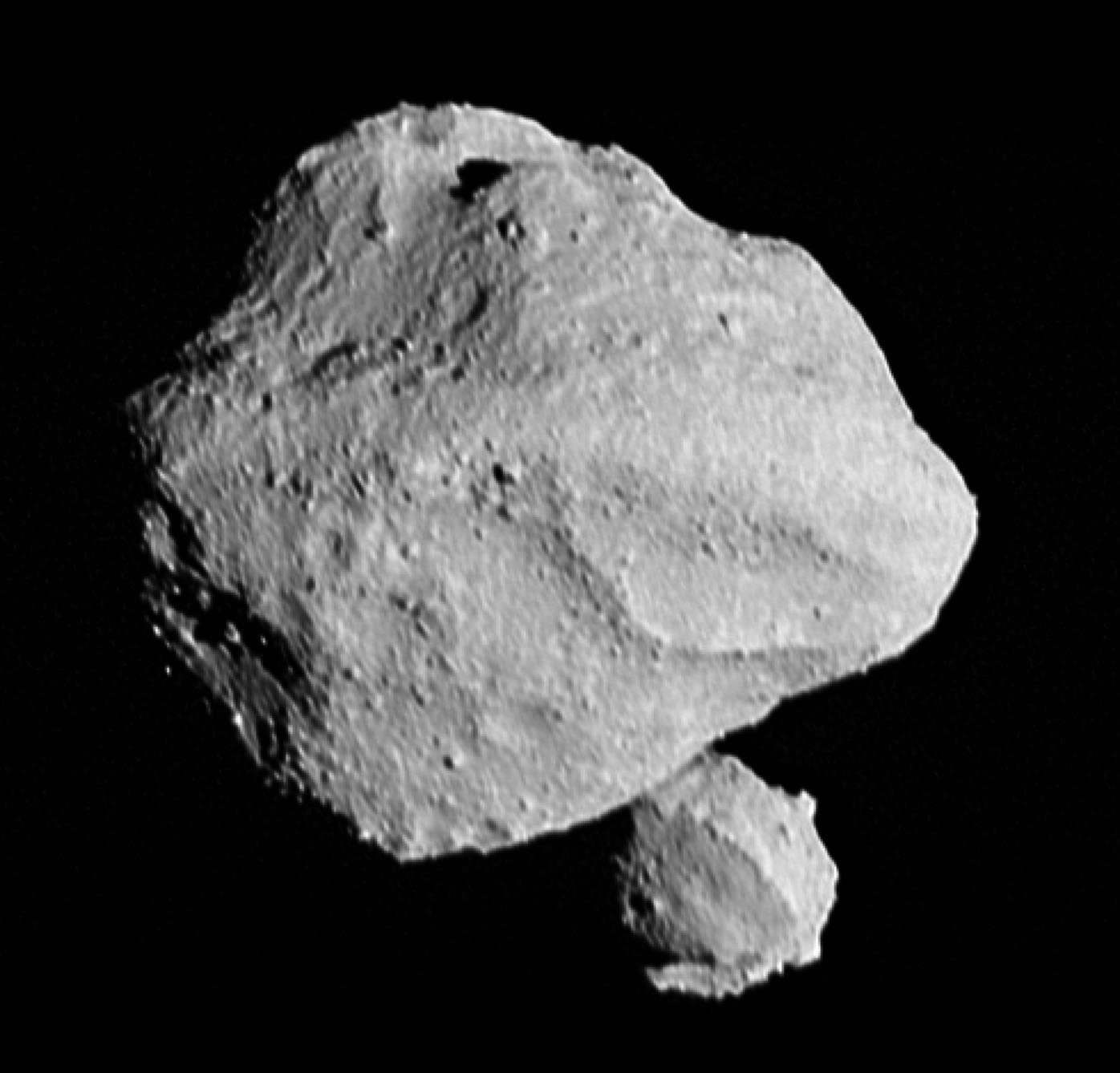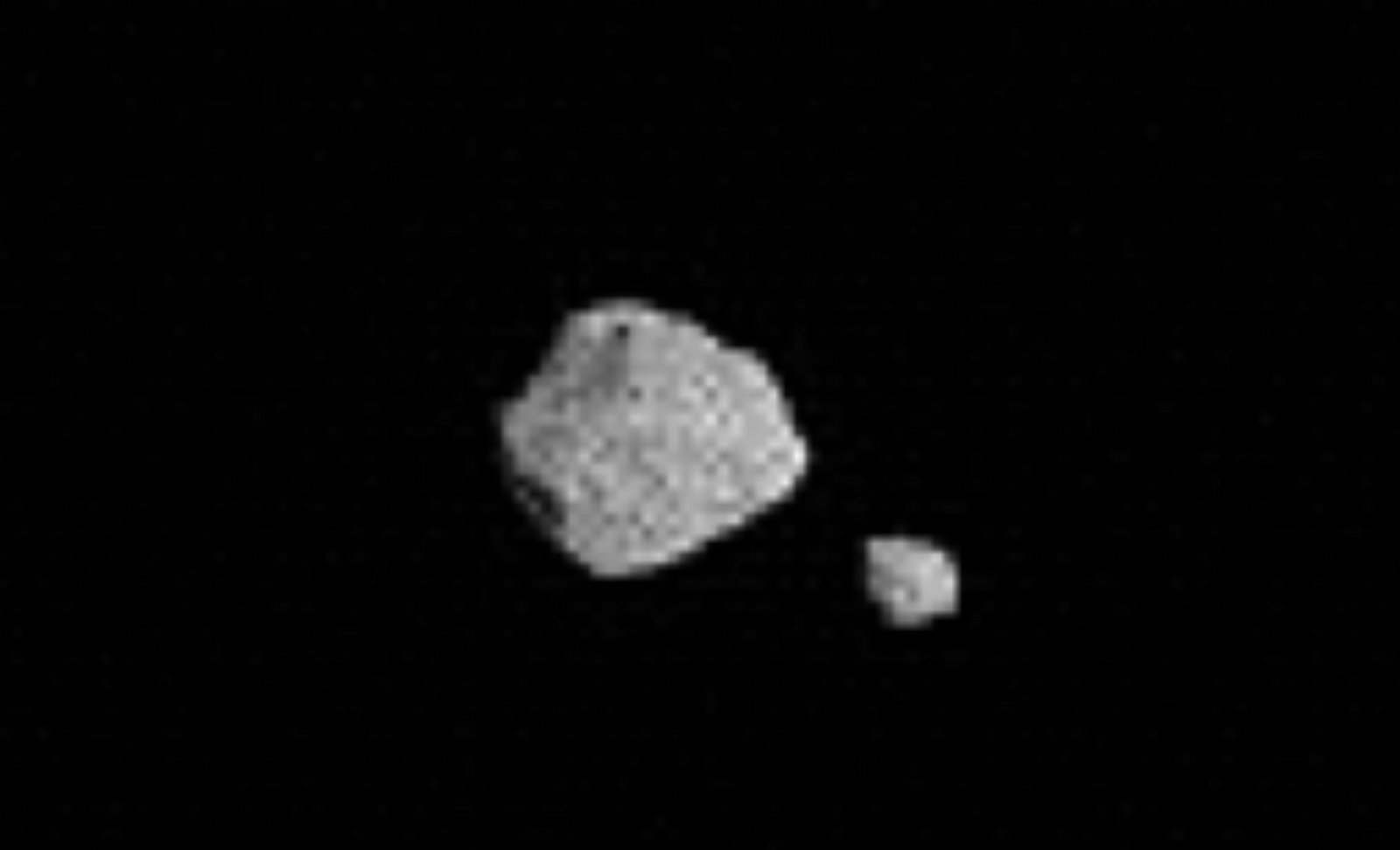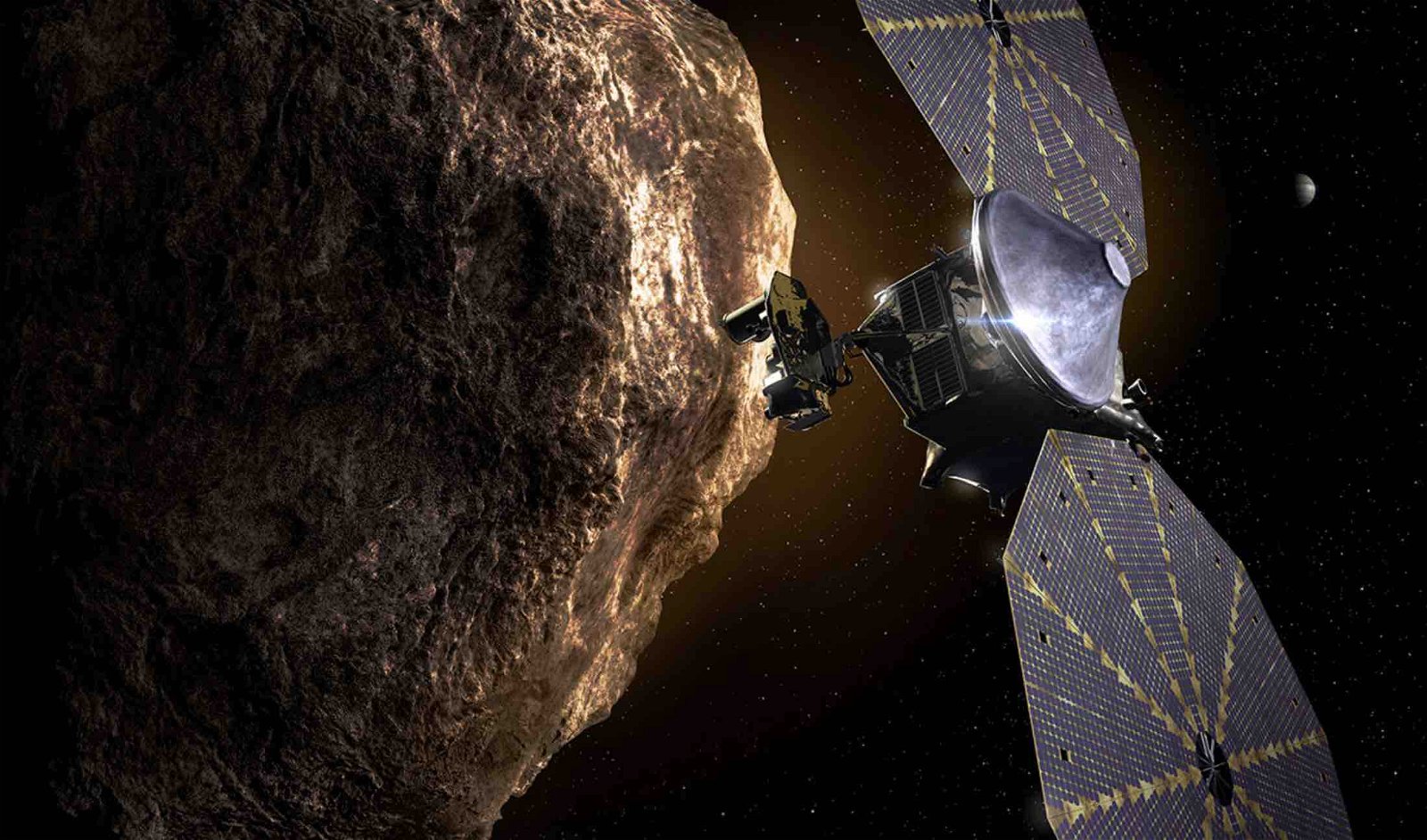As NASA’s Lucy spacecraft recently made its approach toward the asteroid Dinkinesh, the first object it would pass close enough to for such a near flyby, NASA technicians got a surprise: it wasn’t alone.
The November 1, 2023 flyby revealed not just one asteroid, but two of them, as images returned by Lucy revealed Dinkinesh to be a binary pair, with a smaller, previously hidden satellite that had been lurking in its orbit.
NASA’s Lucy spacecraft was launched with the mission of exploring a collection of primitive asteroids currently orbit at the same distance from the Sun as Jupiter that are known as Trojan asteroids.


“When Lucy was originally selected for flight, we planned to fly by seven asteroids,” said Hal Levison, principal investigator for NASA’s Lucy mission Southwest Research Institute’s Boulder, Colorado branch.
“With the addition of Dinkinesh, two Trojan moons, and now this satellite, we’ve turned it up to 11,” Levison said in a statement.
Although Lucy’s recent flyby confirmed that Dinkinesh had a satellite accompanying it, there had already been a few indicators that hinted at the possibility that the asteroid was a binary.
A major clue had been that Dinkinesh’s brightness seemed to gradually change when observed from a distance, a feature that can be commonly explained by the movement of a secondary object in orbit around a larger one like Dinkinesh and its companion.
Based on analysis of the first images Lucy dispatched back from its encounter, Dinkinesh’s larger body is around 0.5 miles in width, while its satellite is close to one-third the size of its host asteroid.


The Lucy team says the flyby allowed them a perfect opportunity to test and evaluate the spacecraft’s thermal tracking system that autonomously locks onto asteroids and studies them while it whizzes past at close to 10,000 miles per hour.
Tom Kennedy, a guidance and navigation engineer at Lockheed Martin in Littleton, Colorado, said the images clearly show that Lucy’s thermal tracking system works perfectly, “even when the universe presented us with a more difficult target than we expected.”
Dinkinesh’s unique name is derived from the Amharic language, meaning “marvelous.” Along with its surprise companion revealed in the images dispatched by Lucy, the flyby also granted NASA scientists an opportunity to observe the smallest main belt asteroid that has ever been observed at close range by a spacecraft.


The Lucy team says it will take several more days for them to downlink all the information the spacecraft was able to collect during the encounter, which they will use to gain deeper insights into both the spacecraft and its performance, as well as the unique binary asteroid it managed to photograph.
The information from Lucy’s meeting with Dinkinesh will also help prepare it for its next asteroid encounter, which will be with a main-belt asteroid called Donaldjohanson.
The flyby with Donaldjohanson is scheduled to occur in 2025, followed by its ultimate rendezvous with the Jupiter Trojan asteroids two years later in 2027.
Micah Hanks is the Editor-in-Chief and Co-Founder of The Debrief. He can be reached by email at micah@thedebrief.org. Follow his work at micahhanks.com and on Twitter: @MicahHanks.

